Abstract
In 18 subjects, 9 of whom had previously complained of various nonrespiratory adverse effects from the urea formaldehyde foam insulation (UFFI) in their homes, pulmonary function was assessed before and after exposure in a laboratory. On separate occasions formaldehyde, 1 part per million (ppm), and UFFI off-gas yielding a formaldehyde concentration of 1.2 ppm, were delivered to each subject in an environmental chamber for 90 minutes and a fume hood for 30 minutes respectively. None of the measures of pulmonary function used (forced vital capacity, forced expiratory volume in 1 second or maximal midexpiratory flow rate) showed any clinically or statistically significant response to the exposure either immediately after or 8 hours after its beginning. There were no statistically significant differences between the responses of the group that had previously complained of adverse effects and of the group that had not. There was no evidence that either formaldehyde or UFFI off-gas operates as a lower airway allergen or important bronchospastic irritant in this heterogeneous population.
Full text
PDF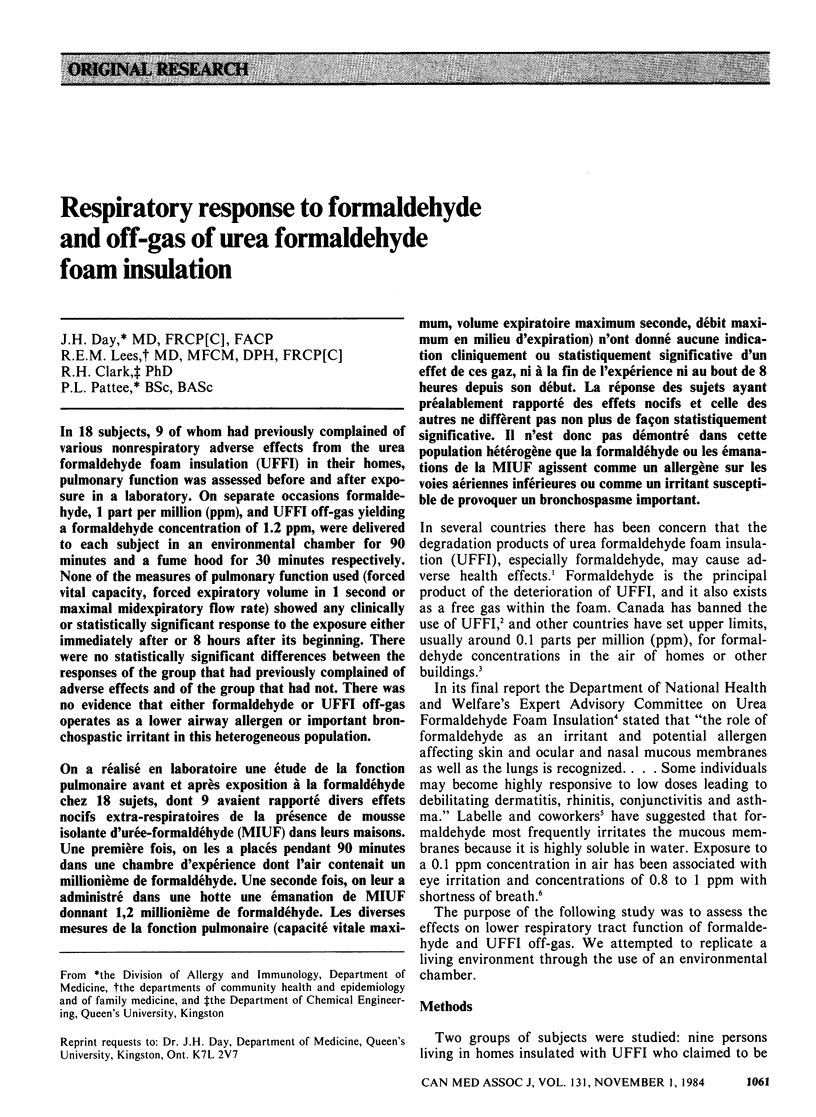
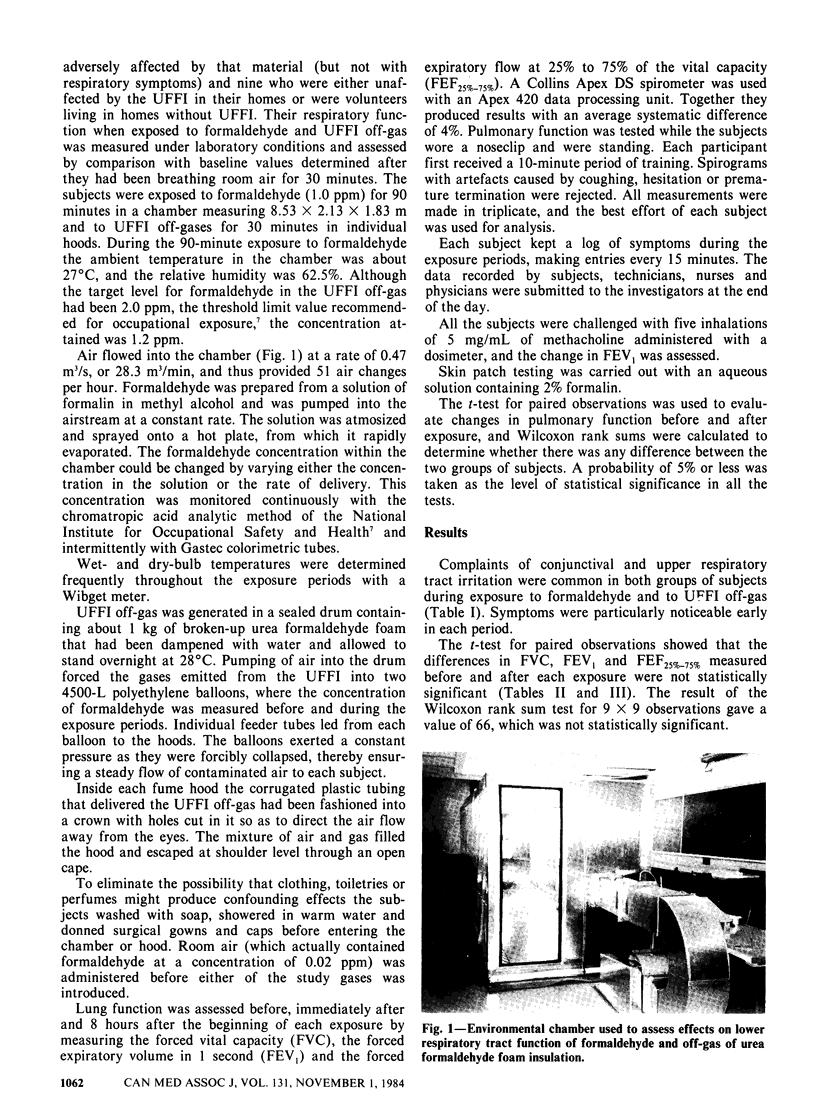
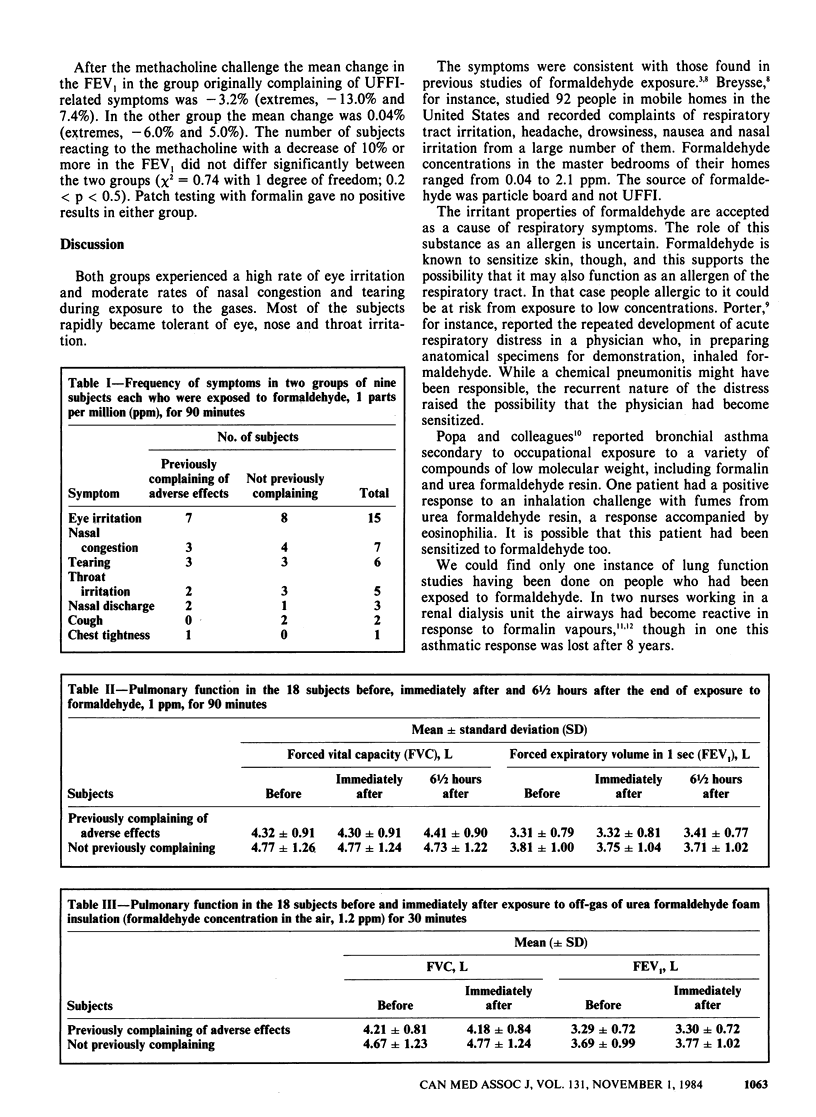
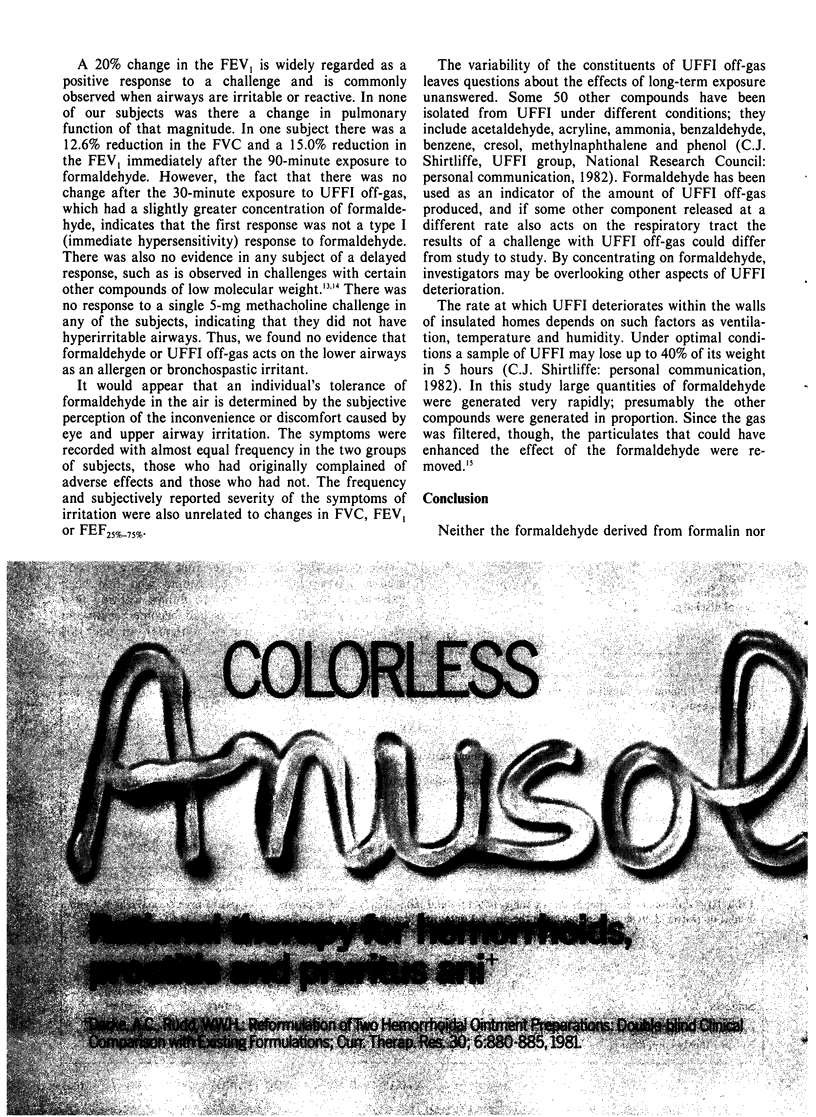
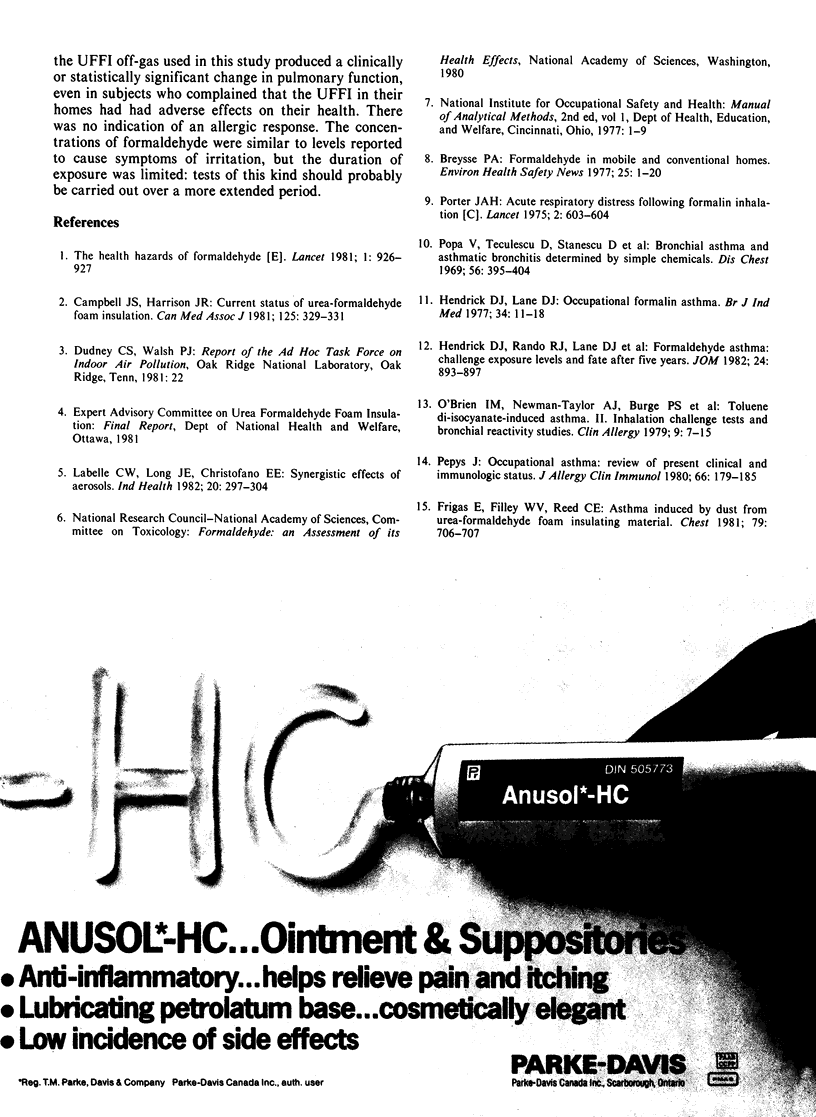
Images in this article
Selected References
These references are in PubMed. This may not be the complete list of references from this article.
- Campbell J. S., Harrison J. R. Current status of urea-formaldehyde foam insulation. Can Med Assoc J. 1981 Aug 15;125(4):329–331. [PMC free article] [PubMed] [Google Scholar]
- Frigas E., Filley W. V., Reed C. E. Asthma induced by dust from urea-formaldehyde foam insulating material. Chest. 1981 Jun;79(6):706–707. doi: 10.1378/chest.79.6.706. [DOI] [PubMed] [Google Scholar]
- Hendrick D. J., Lane D. J. Occupational formalin asthma. Br J Ind Med. 1977 Feb;34(1):11–18. doi: 10.1136/oem.34.1.11. [DOI] [PMC free article] [PubMed] [Google Scholar]
- Hendrick D. J., Rando R. J., Lane D. J., Morris M. J. Formaldehyde asthma: challenge exposure levels and fate after five years. J Occup Med. 1982 Nov;24(11):893–897. [PubMed] [Google Scholar]
- O'Brien I. M., Newman-Taylor A. J., Burge P. S., Harries M. G., Fawcett I. W., Pepys J. Toluene di-isocyanate-induced asthma. II. Inhalation challenge tests and bronchial reactivity studies. Clin Allergy. 1979 Jan;9(1):7–15. doi: 10.1111/j.1365-2222.1979.tb01517.x. [DOI] [PubMed] [Google Scholar]
- Okubo T., Shigeta S. Anemia cases after acute m-dinitrobenzene intoxication due to an occupational exposure. Ind Health. 1982;20(4):297–304. doi: 10.2486/indhealth.20.297. [DOI] [PubMed] [Google Scholar]
- Pepys J. Occupational asthma: review of present clinical and immunologic status. J Allergy Clin Immunol. 1980 Sep;66(3):179–185. doi: 10.1016/0091-6749(80)90036-6. [DOI] [PubMed] [Google Scholar]
- Popa V., Teculescu D., Stănescu D., Gavrilescu N. Bronchial asthma and asthmatic bronchitis determined by simple chemicals. Dis Chest. 1969 Nov;56(5):395–402. doi: 10.1378/chest.56.5.395. [DOI] [PubMed] [Google Scholar]
- Porter J. A. Letter: Acute respiratory distress following formalin inhalation. Lancet. 1975 Sep 27;2(7935):603–604. doi: 10.1016/s0140-6736(75)90189-0. [DOI] [PubMed] [Google Scholar]



